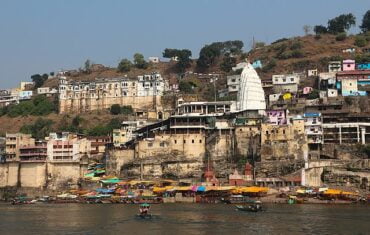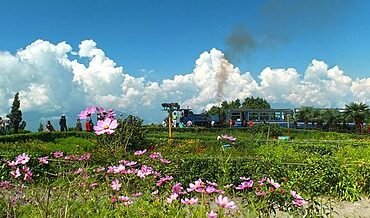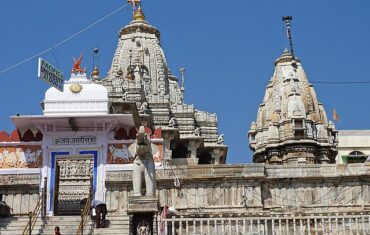Mahakaleshwar Jyotirlinga is a Hindu temple dedicated to Lord Shiva and is one of the Twelve Jyotirlingas, shrines which are said to be the most sacred abodes of Shiva. It is located in the ancient city of Ujjain in the state of Madhya Pradesh, India. The temple is situated on the side of the holy river Shipra, which is considered to be a source of purification and salvation. The presiding deity, Shiva in the lingam form is believed to be Swayambhu, deriving currents of power (Shakti) from within itself as against the other images and lingams that are ritually established and invested with mantra-shakti.
Location of Mahakaleshwar Jyotirlinga
The Mahakaleshwar temple is about 2 km from the Ujjain railway station, which is well connected by trains from various cities in India. The temple is also about 60 km from the Indore airport, which has flights from major cities in India. The temple can also be reached by bus or taxi from various cities in Madhya Pradesh and nearby states. The temple is located in the heart of Ujjain city, which is one of the seven sacred cities (Sapta Puri) in Hinduism. Ujjain is also known for its historical and cultural significance, as it was once the capital of the legendary king Vikramaditya and the seat of learning and astronomy.
Timing of Mahakaleshwar Jyotirlinga
The Mahakaleshwar temple is open for darshan (viewing) from 4 am to 11 pm every day. The temple has four aartis (rituals) daily: at 4 am, 7 am, 5 pm and 8 pm. The temple also has a special aarti called Bhasma Aarti, which is performed at 4 am using the sacred ash (bhasma) from a funeral pyre. This aarti is considered to be very auspicious and powerful, as it symbolizes the destruction of evil and ignorance by Shiva. The temple charges a nominal fee for entry and photography.
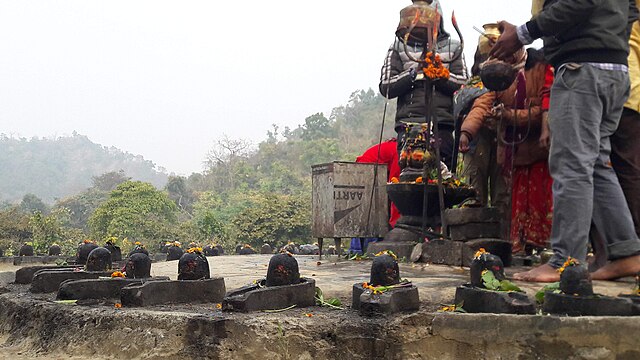
Rituals of Mahakaleshwar Temple
The Mahakaleshwar temple has various rituals and ceremonies that are performed by the priests and devotees throughout the year. Some of the main rituals are:
- Abhishek: This is the ritual of bathing the idol of Shiva with water, milk, honey, curd, ghee and other substances. This is done to express devotion and gratitude to Shiva and to seek his blessings. Devotees can perform abhishek by themselves or by booking online through the temple website.
- Rudrabhishek: This is a special abhishek that involves chanting the Rudram, a hymn from the Vedas that praises Shiva as the destroyer of evil and the source of all creation. This is done to invoke Shiva’s grace and protection from all kinds of troubles and calamities. Devotees can perform rudrabhishek by themselves or by booking online through the temple website.
- Mahapuja: This is a grand puja (worship) that involves offering various items such as flowers, fruits, sweets, clothes and ornaments to Shiva. This is done to express love and reverence to Shiva and to seek his fulfillment of all desires. Devotees can perform mahapuja by themselves or by booking online through the temple website.
- Pradakshina: This is the ritual of circumambulating (walking around) the temple in a clockwise direction. This is done to show respect and devotion to Shiva and to imbibe his positive energy and vibrations. Devotees can do pradakshina as many times as they wish.
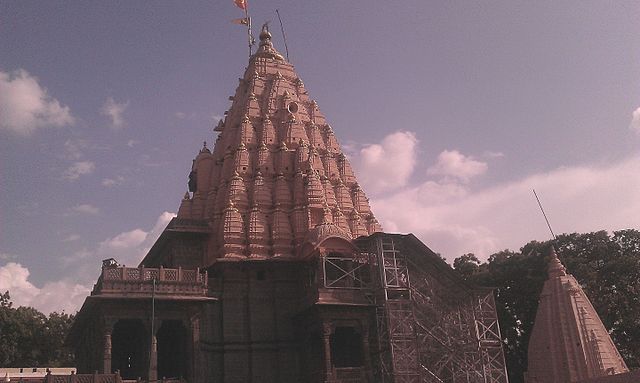
Importance of Mahakaleshwar Jyotirlinga Temple
The Mahakaleshwar temple is considered one of the most important pilgrimage sites for Hindus, especially for Shaivites (followers of Shiva). The temple has a long and rich history, with evidence of its existence dating back to the 8th century AD. The temple has been renovated and expanded several times by various kings and rulers, who patronized its worship and donated its wealth and resources. The temple has also been a center of culture and learning, as it attracted many poets, scholars and saints, such as Kalidasa, Varahamihira and Adi Shankara.
The Mahakaleshwar temple is believed to be the place where Shiva manifested himself as a Jyotirlinga, a pillar of light, to prove his supremacy over other gods. The temple is also believed to be the place where Shiva vanquished the demon Tripurasura, who had conquered the three worlds with his three cities (Tripura). The temple is also believed to be the place where Shiva blessed his devotee Upamanyu with divine vision and milk. The temple is also believed to be the place where Shiva granted the boon of immortality to his devotee Markandeya, who was destined to die at the age of 16.
The Mahakaleshwar temple is a symbol of faith, power and devotion for millions of Hindus across the world. The temple attracts thousands of pilgrims and tourists every year, who come to seek the blessings of Shiva and to witness the majesty and magnificence of the temple.

Significance of Mahakaleshwar Temple
The Mahakaleshwar temple has a great significance for Hindus, as it represents one of the aspects of Shiva, the supreme god of Hinduism. Shiva is known by many names and forms, such as Mahadev (the great god), Nataraj (the lord of dance), Rudra (the fierce one), Neelkanth (the blue-throated one), Bholenath (the simple one) and many more. Shiva is also known as Mahakal, which means “the lord of time” or “the lord of death”.

Mahakal is the aspect of Shiva that controls time and destiny. He is the destroyer of evil and ignorance, and the liberator of souls from the cycle of birth and death. He is also the protector of his devotees from all kinds of dangers and calamities. He is also the master of Tantra, the esoteric science of energy and consciousness. He is also the patron of Ujjain, which is considered to be one of his favorite cities.
The Mahakaleshwar temple is dedicated to Shiva as Mahakal, who is worshipped as the giver of time, health, wealth and happiness. The temple is also dedicated to Shiva as Jyotirlinga, which means “the linga (symbol) of light”. A Jyotirlinga is a representation of Shiva’s infinite power and presence, which can be seen and felt by his devotees. A Jyotirlinga is also a manifestation of Shiva’s grace and compassion, which can heal and transform his devotees.
The Mahakaleshwar temple is one of the twelve Jyotirlingas in India, which are considered to be the most sacred shrines of Shiva. Each Jyotirlinga has a different name and story associated with it, which reveals a different aspect of Shiva’s personality and attributes. By visiting and worshipping these Jyotirlingas, devotees can experience the various facets of Shiva’s glory and benevolence.
FAQ’s
Some of the frequently asked questions about the Mahakaleshwar temple are:
- How to reach Mahakaleshwar temple?
- The Mahakaleshwar temple can be reached by road, rail or air. The nearest airport is Indore airport, which is about 60 km away from the temple. The nearest railway station is Ujjain railway station, which is about 2 km away from the temple. The temple can also be reached by bus or taxi from various cities in Madhya Pradesh and nearby states.
- When is the best time to visit Mahakaleshwar temple?
- The best time to visit Mahakaleshwar temple is from October to March, when the weather is pleasant and comfortable. The temple can also be visited during festivals such as Mahashivaratri, Shravan month, Kartik month and Kumbh Mela, when the temple is decorated and celebrated with great fervor and enthusiasm.
- What are the other attractions near Mahakaleshwar temple?
- There are many other attractions near Mahakaleshwar temple that can be explored by the visitors. Some of them are:
- Kal Bhairav Temple: This is a temple dedicated to Kal Bhairav, a fierce form of Shiva who guards the city of Ujjain. It is famous for its unique ritual of offering liquor to the deity.
- Harsiddhi Temple: This is a temple dedicated to Goddess Harsiddhi, a form of Shakti who grants all wishes. It is one of the 51 Shakti Peethas in India, where Sati’s elbow fell.
- Sandipani Ashram: This is an ancient ashram where Lord Krishna and his brother Balarama studied under their guru Sandipani. It has a sacred pond called Gomti Kund, where Krishna brought water from all holy rivers.
- Vedha Shala: This is an observatory built by Maharaja Jai Singh II in 1725 AD. It has various instruments for
- There are many other attractions near Mahakaleshwar temple that can be explored by the visitors. Some of them are:
Conclusion
The Mahakaleshwar Jyotirlinga is a splendid and ancient temple that showcases the power and devotion of Hinduism. The temple is a testimony of the faith and courage of the Hindus, who have preserved and maintained the temple despite several invasions and damages. The temple is a source of inspiration and solace for millions of pilgrims and tourists, who come to seek the blessings of Shiva and to witness the majesty and magnificence of the temple. The Mahakaleshwar Jyotirlinga is not just a temple, but a living legend that embodies the spirit and essence of Hinduism.


